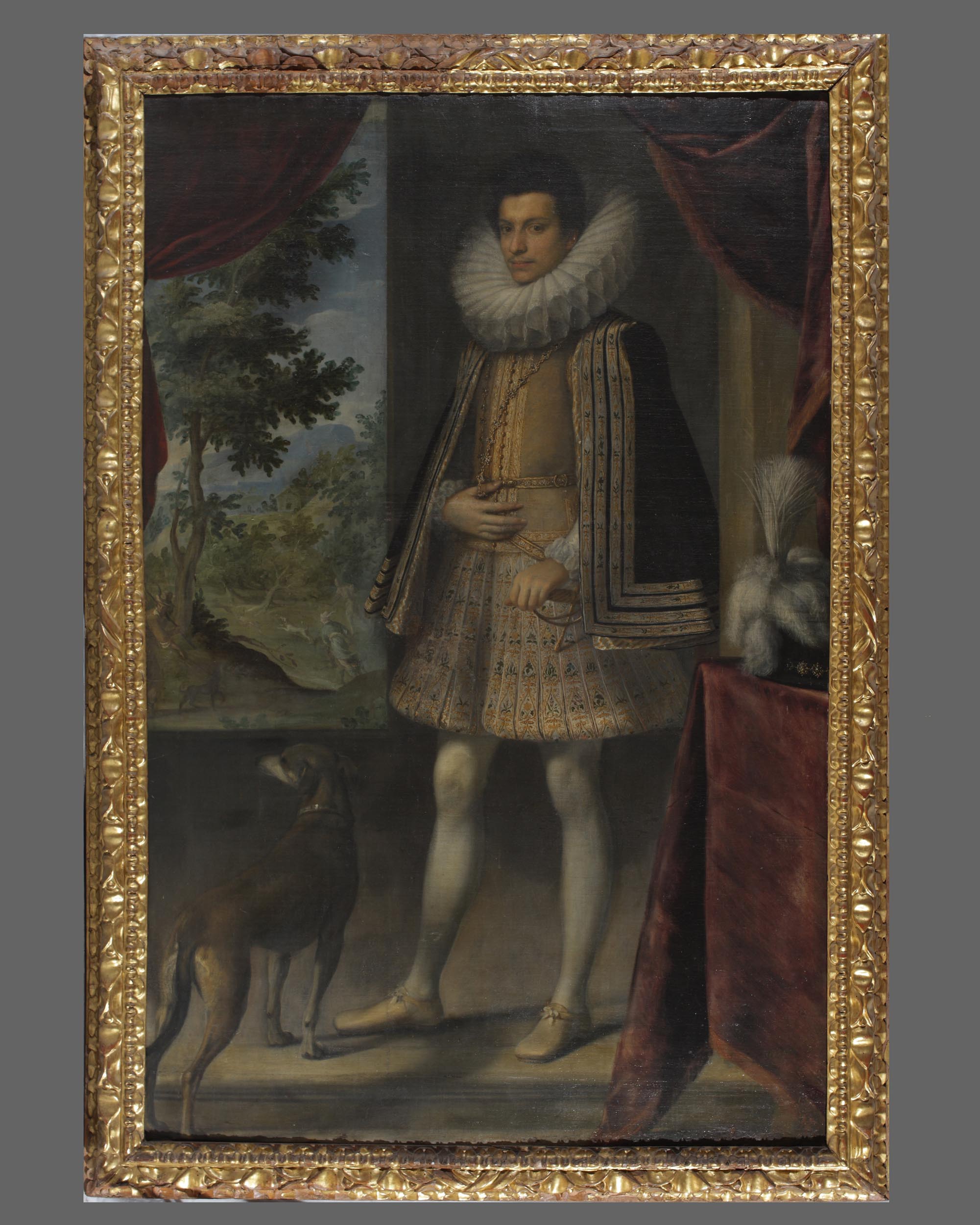The portrait commissioned to Sante Peranda for the Gallery of Alexander I Pico at Mirandola is today exhibited in the Ducal Palace in Mantua, where it arrived in 1716 following the robbery of the most precious objects belonging to the Duchy of Mirandola during the Spanish War. The protagonist is Prince Alfonso, eldest son of Duke Cesare and Virginia de’ Medici and future ruler with the name Alfonso III, who, after waiting all his life to ascend the throne, abdicated in favour of his son after not even a year, choosing the life of a Capuchin under the name of Father Giovanni Battista.
The painting shows a bright and vibrant colour palette, quite different from the sombre portrait of the father painted around 1609. The different pictorial rendering and the inclusion of various elements in the closed space of the room have led some critics to date the work around 1613-1614, although this interpretation is not accepted by all historians. The scene now appears bright and cheerful, the back wall opens onto a window that allows a glimpse of lush vegetation with a probably hunting scene. Hunting was the Prince’s greatest passion and is emphasised in the work by the presence of the dog, painted naturally and in foreshortening, at his feet. In Peranda’s portraits, the detached red drape, placed behind the protagonist, recurs frequently. The element is also present in this painting and, like the curtains and the step on which the Prince rests, are elements that recall a metaphorical theatrical backdrop.
Sante Peranda’s elegant painting, whose adherence to reality is reminiscent of Dutch painting, is evident in the rendering of the highlights of the robes, the lightness of the feathers and the vaporous gorget, traits that make the painting courtly and fascinating.







